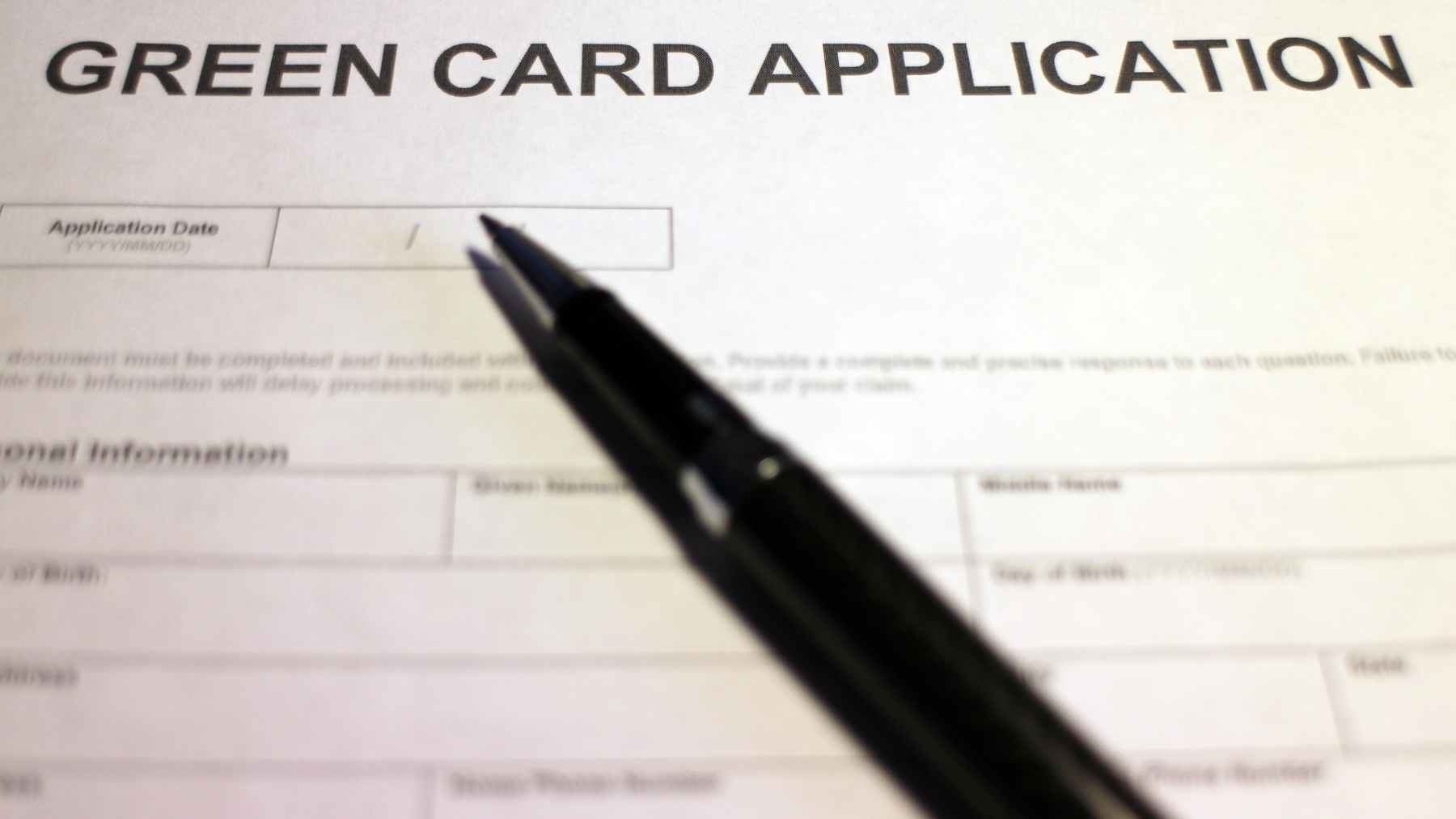Are you ready for a new chapter in your life in the United States? This journey brings opportunities, stability, and the freedom to chase your dreams. Imagine how great it would be to hold a Green Card. It shows you belong and are a permanent part of America.
Getting a Green Card might seem hard. But, the United States Citizenship and Immigration Services (USCIS) is your partner. They will help you through the process. They’ll explain about eligibility, types of immigration, how to get someone to sponsor you, and more.
The first step is knowing if you want to be with family, work in the U.S., or seek safety. This guide will get you ready for the Green Card journey. It will help you understand and feel confident about this big step.

There are different ways to get a Green Card, based on you and what you’re eligible for. You’ll learn about changing your status or applying from outside the U.S. Discover the power of someone sponsoring your application or filing by yourself.
This guide will show you the forms you’ll need to fill out. Forms like I-130, I-140, and I-485. You’ll also learn about key steps like giving your fingerprints, having an interview, and getting the final decision.
No matter where you are now, or what your story is, this guide can help. It will show you the way to a successful Green Card journey.
Ready to step into a brighter future? Let’s start this amazing journey together.
Application Process Inside the United States
If you meet the criteria for a Green Card in the U.S., you can apply from within the country. The adjustment of status process with USCIS lets you file Form I-485. This is the Application to Register Permanent Residence or Adjust Status.
If you have an approved immigrant petition and there’s an available visa, you might file Form I-485 together with the petition. This is called concurrent filing. It can make the application process smoother.
Biometrics Appointment and Interview
USCIS will set a date for your biometrics appointment. At this meeting, you will give your fingerprints, get your picture taken, and sign your name. These actions are for checking your identity and running background checks.
After the biometrics, you’ll get an interview scheduled. In the interview, USCIS will review your application and ask you some questions. They also validate if you qualify for a Green Card.
Decision on Your Application
After the interview, USCIS will assess your application. It’s key to remember that Green Card application processing times can differ. So, you may have to wait a while for a decision.
Watch your application status by using USCIS’s online tools. Plus, if you move while the application is being processed, update your address with USCIS quickly. This prevents any delays or losing important documents.
Tracking Delivery of Your Documents
When USCIS approves your Green Card application, they’ll send your Green Card, EAD, and Travel Document. Follow the delivery of these documents using USCIS’s online tracker. It’s crucial to make sure your documents are received safely.
Application Process Outside the United States
If you are outside the U.S., you’ll follow the consular processing method. This is through the U.S. Department of State. Visit the Consular Processing page on the USCIS website for the next steps. Consular processing lets you get a green card when you’re not in the U.S. or can’t adjust status there.
The steps for consular processing depend on your situation and needs. You must know which category you fall into and do your homework. Also, make sure you get familiar with any documents you might need for travel, like advance parole or a refugee travel document.
You might need a medical check-up if you’re applying for a green card. Or, you might need an affidavit of support to show you can support yourself without help from the government. Be sure to follow the consular processing steps closely. Meeting all the requirements improves your chances for a successful green card application.

FAQs
What are the initial steps to apply for a green card?
The green card application process begins with determining your eligibility based on factors like family relationships, employment offers, or humanitarian reasons. Next, an immigrant petition (Form I-130 for family-based or Form I-140 for employment-based) is filed with the United States Citizenship and Immigration Services (USCIS). Approval of this petition is the first major step in the process.
How do you get a green card through marriage?
To get a marriage green card, a U.S. citizen or permanent resident spouse must file Form I-130 with USCIS. Following approval, the spouse seeking a green card must either apply for a visa through consular processing abroad or adjust their status to a permanent resident (Form I-485) if they’re already in the United States. The process involves proving the marriage is bona fide and passing all necessary background checks and interviews.
What is the difference between adjustment of status and consular processing?
Adjustment of status is for applicants currently in the U.S. and allows them to file Form I-485, Application to Register Permanent Residence or Adjust Status, without leaving the U.S. Consular processing is for applicants outside the U.S. or those ineligible to adjust their status within the U.S. This process requires attending an interview at a U.S. embassy or consulate in one’s home country.
How long does the green card process take?
The green card timeline varies greatly depending on the type of green card you are applying for, your country of origin, and the current processing times of USCIS or the Department of State. Family-based green cards can take from 12 months to several years, while employment-based green cards might take 6 months to several years. The USCIS website and the monthly Visa Bulletin provide updated processing times and visa availability.
What are the requirements for family-based green cards?
For family-based green cards, applicants must have a close family relationship with a U.S. citizen or permanent resident, such as being a spouse, child, parent, or sibling. The sponsoring relative must file Form I-130, Petition for Alien Relative, and prove they have enough income or assets to support the green card applicant. The applicant must also meet general eligibility requirements for immigration to the U.S.
Can you apply for a green card through employment?
Yes, individuals can apply for a green card through employment. The process typically involves an employer filing Form I-140, Immigrant Petition for Alien Worker, on behalf of the applicant. Certain categories may require a labor certification to prove that there are no qualified U.S. workers available for the position. Priority is given based on the job’s skills and educational requirements.
What is the Diversity Visa Lottery and who is eligible?
The Diversity Visa Lottery, also known as the Green Card Lottery, is a program that allows individuals from countries with historically low rates of immigration to the United States to participate in a lottery for a chance to apply for a green card. Eligibility is determined by country of birth and meeting certain education or work experience requirements. The lottery is conducted by the Department of State.
How do permanent residents or green card holders apply for U.S. citizenship?
Permanent residents (green card holders) may apply for U.S. citizenship through naturalization once they meet specific criteria, including living in the U.S. for at least five years (three years for those married to U.S. citizens), being present in the U.S. for a certain amount of time, demonstrating good moral character, passing English and U.S. history tests, and taking an oath of allegiance to the United States.
Are there any special types of green cards?
Yes, there are several special categories for obtaining a green card, including visas for asylum seekers, refugees, victims of human trafficking (T visa), victims of criminal activity (U visa), individuals eligible under the Violence Against Women Act (VAWA), special immigrant juveniles, and others. Each category has specific eligibility criteria and application processes.

